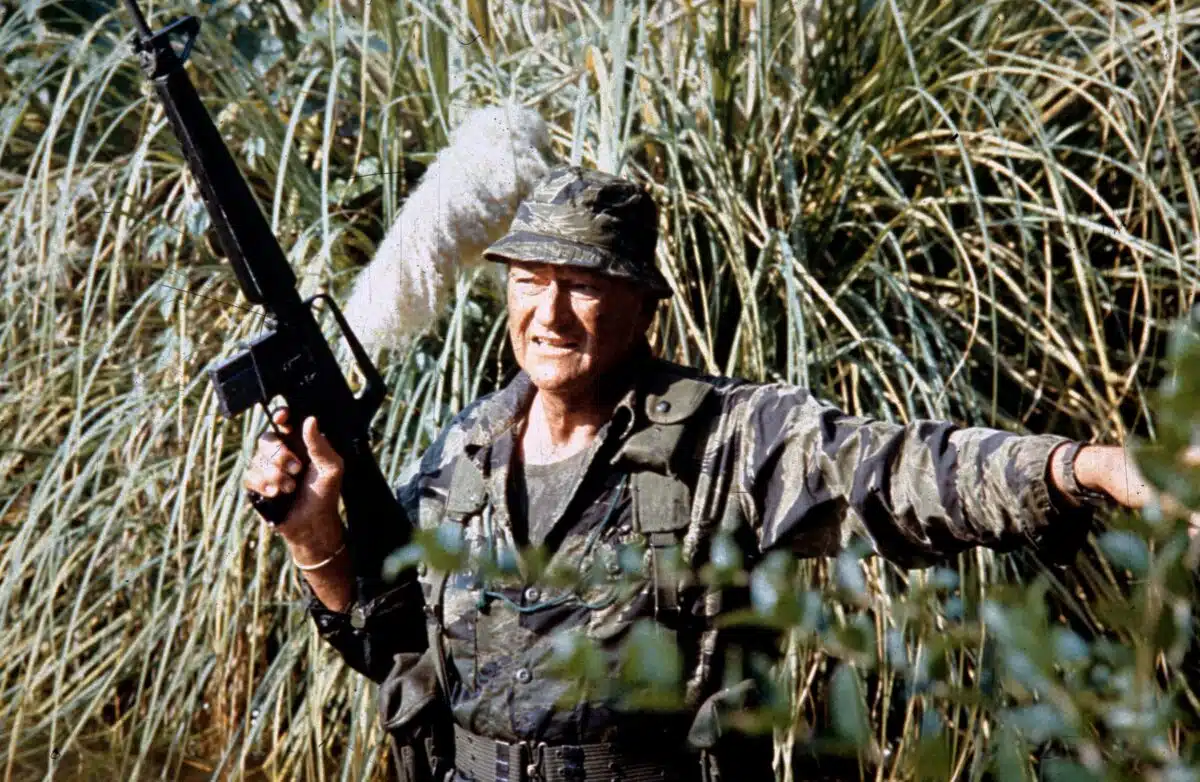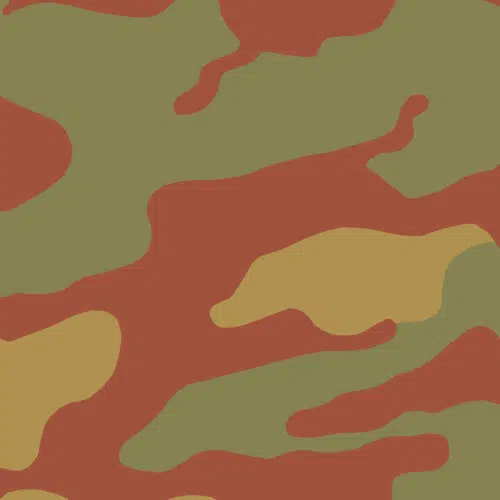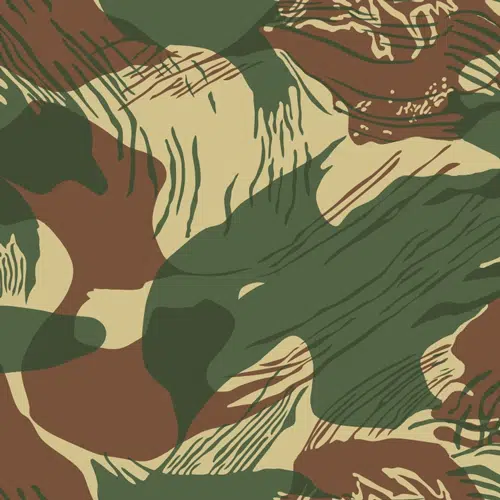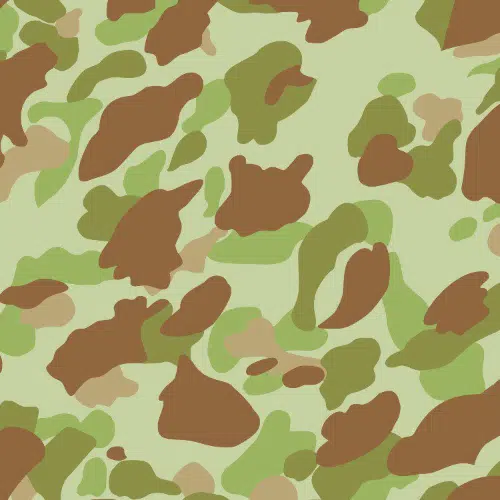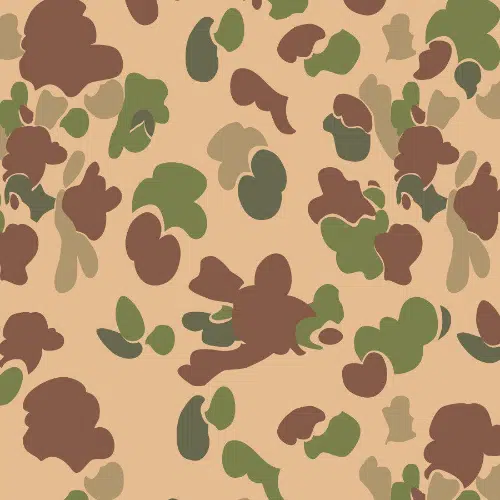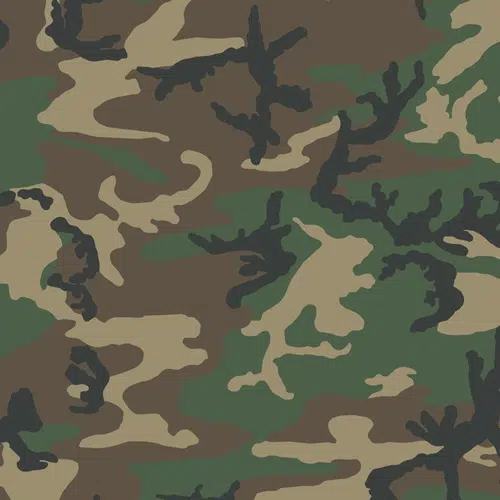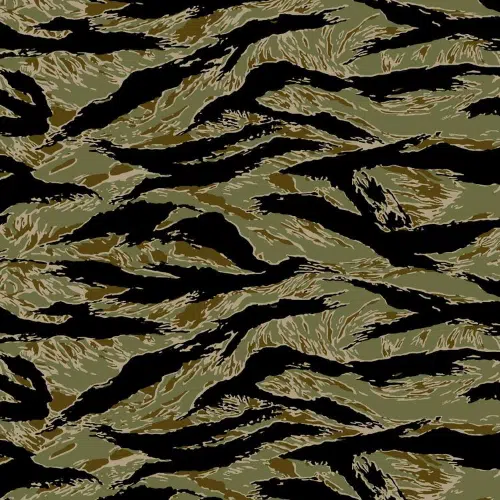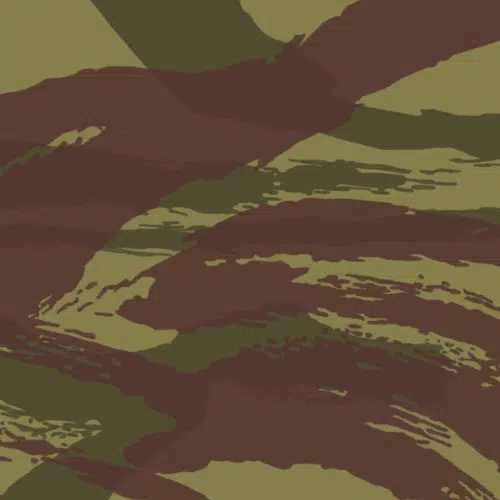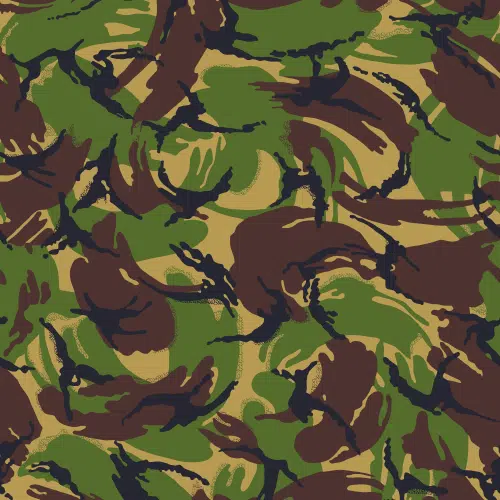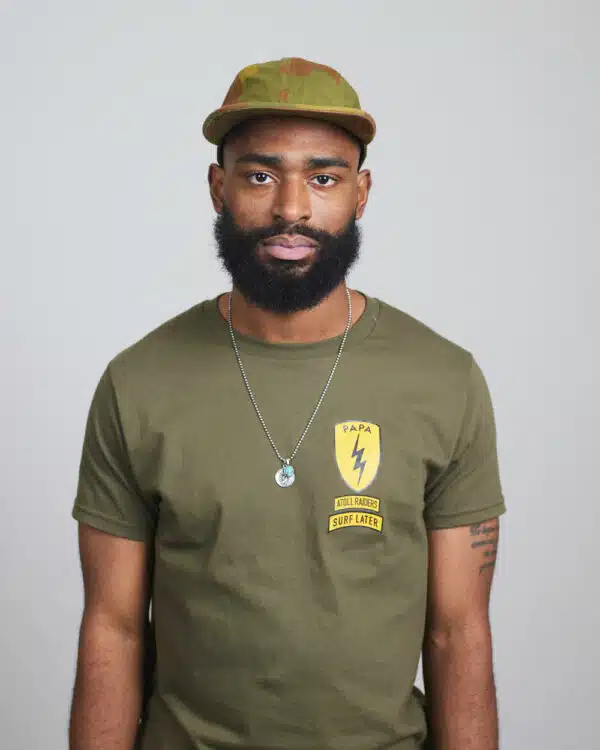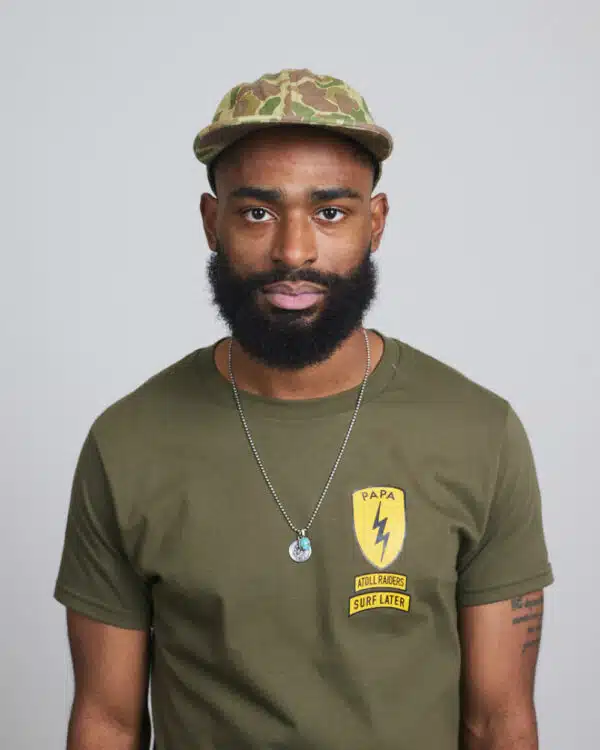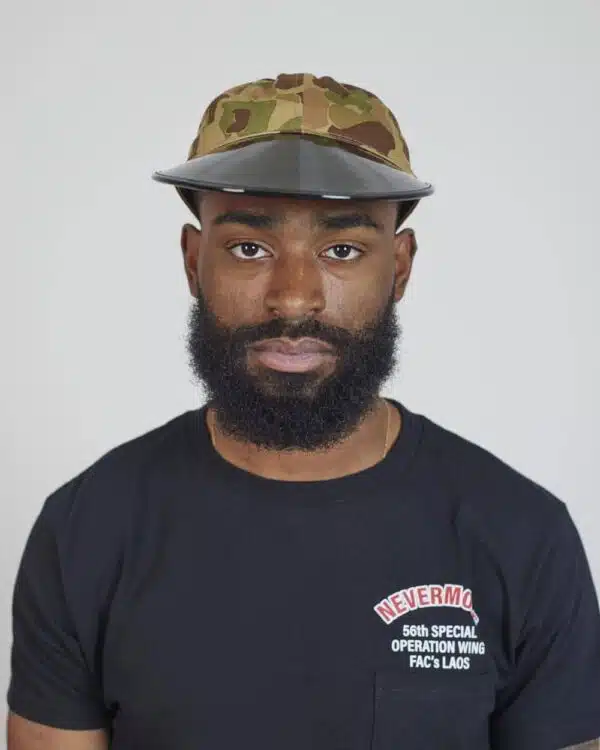The roots of camouflage can be traced back to ancient civilisations where hunters and warriors employed rudimentary methods to blend into their environments. Yet, it wasn’t until the 20th century that camouflage took on new dimensions with the advent of modern warfare. The trenches of World War I witnessed the birth of disruptive patterns, a departure from solid-colored uniforms as military minds sought ways to make soldiers less visible on the battlefield.
As conflicts evolved, so did camouflage, embracing both artistic creativity and scientific precision. The jungle greens of the Pacific theater, the arctic whites of winter warfare, and the digital pixels of contemporary military attire all tell a story of adaptation and innovation. Beyond the battlefield, camouflage has found its way into mainstream fashion and urban aesthetics, blurring the lines between military necessity and cultural expression.
Whilst by no means comprehensive, here’s our guide to camouflage patterns, including their history, use and evolution.
Quick links
Telo Mimetico/San Marco Camouflage
The history of San Marco camouflage is deeply rooted in the military legacy of Italy, and its origins can be traced back to the Telo Mimetico, a groundbreaking concept introduced during the interwar period. Telo Mimetico, translating to “camouflage cloth,” emerged in the late 1920s as Italian military strategists sought innovative ways to enhance the concealment of their troops.
Developed by Colonel Mario Robotti, the Telo Mimetico was a versatile and visually disruptive fabric adorned with irregular geometric shapes, breaking away from the solid-colored uniforms of the time. Robotti’s design drew inspiration from the natural world, incorporating elements that mimicked the play of light and shadow in different environments. This early form of camouflage marked a departure from traditional military attire and demonstrated an understanding of the importance of blending into diverse landscapes.
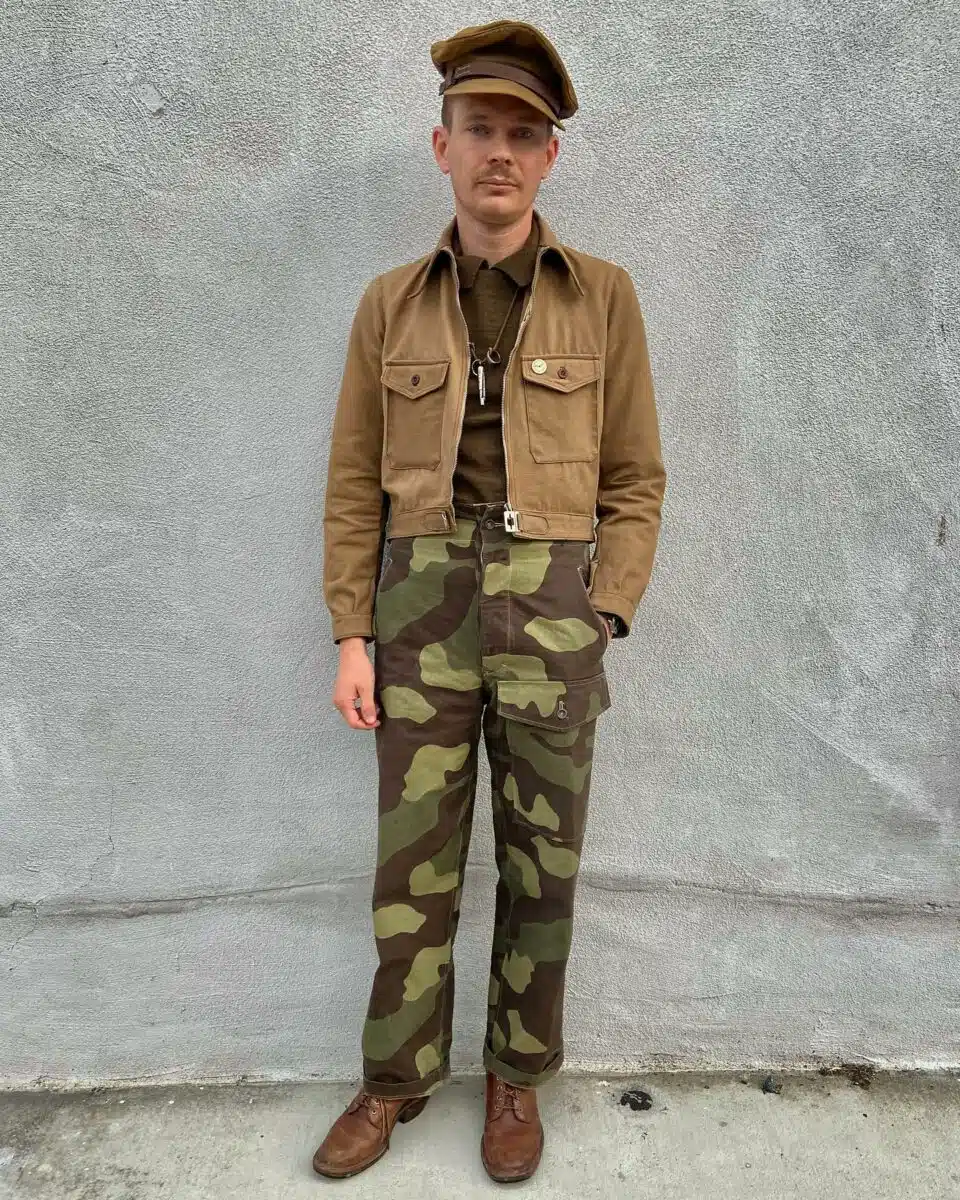
As World War II unfolded, the Telo Mimetico evolved further to meet the challenges of different theaters of operation. The San Marco Division, part of the Italian Royal Navy, adopted a distinctive variant of the camouflage pattern. San Marco camouflage, characterized by its intricate mix of greens, browns, and grays, became synonymous with amphibious warfare. The pattern effectively concealed naval infantry operating in the varied terrains of coastal regions.
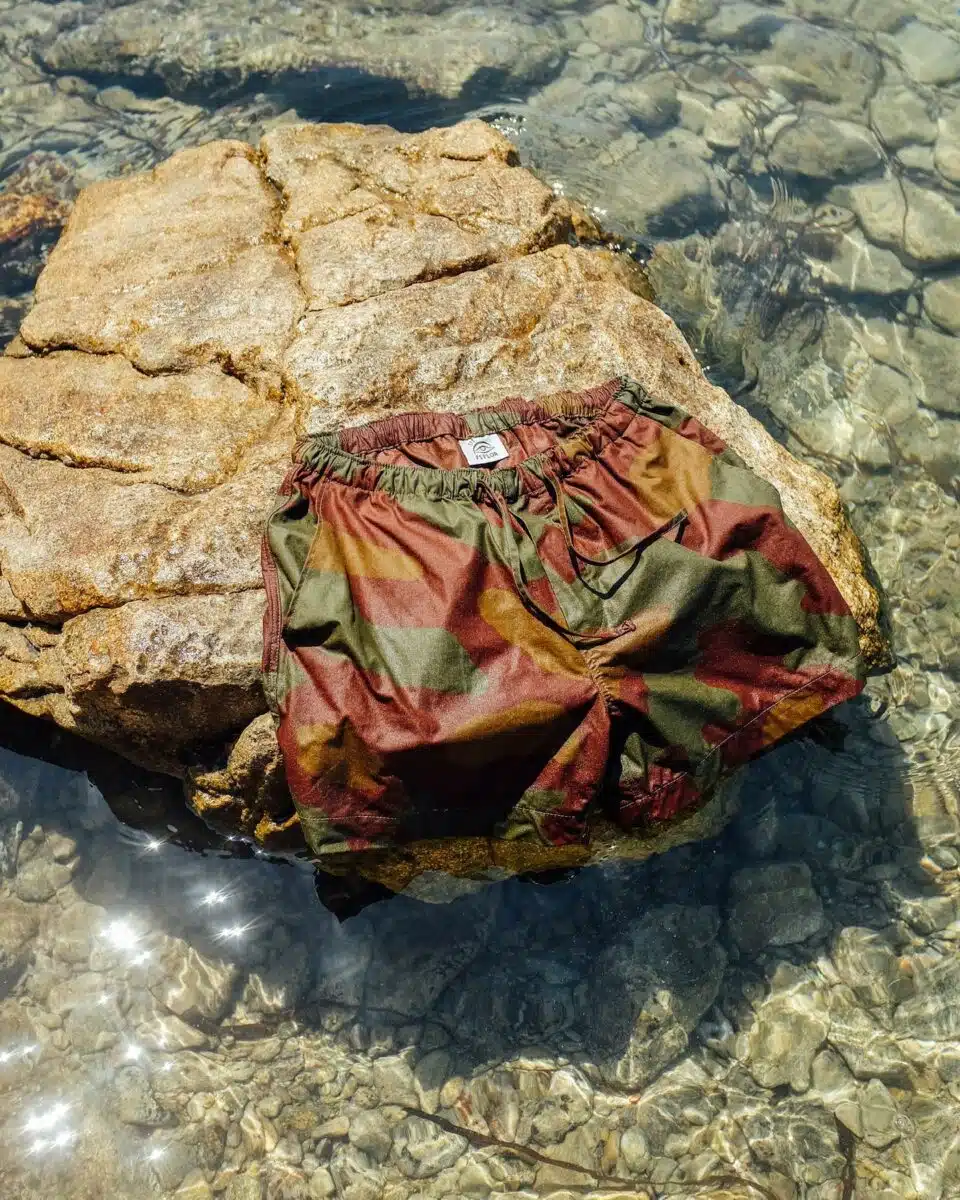
Post-World War II, the influence of San Marco camouflage extended beyond the military sphere. Its unique aesthetic captured the imagination of designers and fashion enthusiasts, permeating into civilian life and influencing trends in clothing and accessories. Today, the legacy of San Marco camouflage endures as a testament to the intersection of military necessity, innovative design, and cultural impact, showcasing the enduring influence of camouflage patterns on both military and civilian realms.
Denison/Brushstroke Camouflage
Named after its designer, British Army Major Denison, the camouflage pattern debuted in the early 1940s as a response to the specific needs of airborne troops. Recognizing the unique challenges faced by paratroopers dropping into diverse terrains, Denison sought a pattern that would provide effective concealment while allowing for ease of movement. The resulting design featured large, irregular brushstroke-like strokes in contrasting colors, creating a disruptive pattern that broke up the wearer’s silhouette.
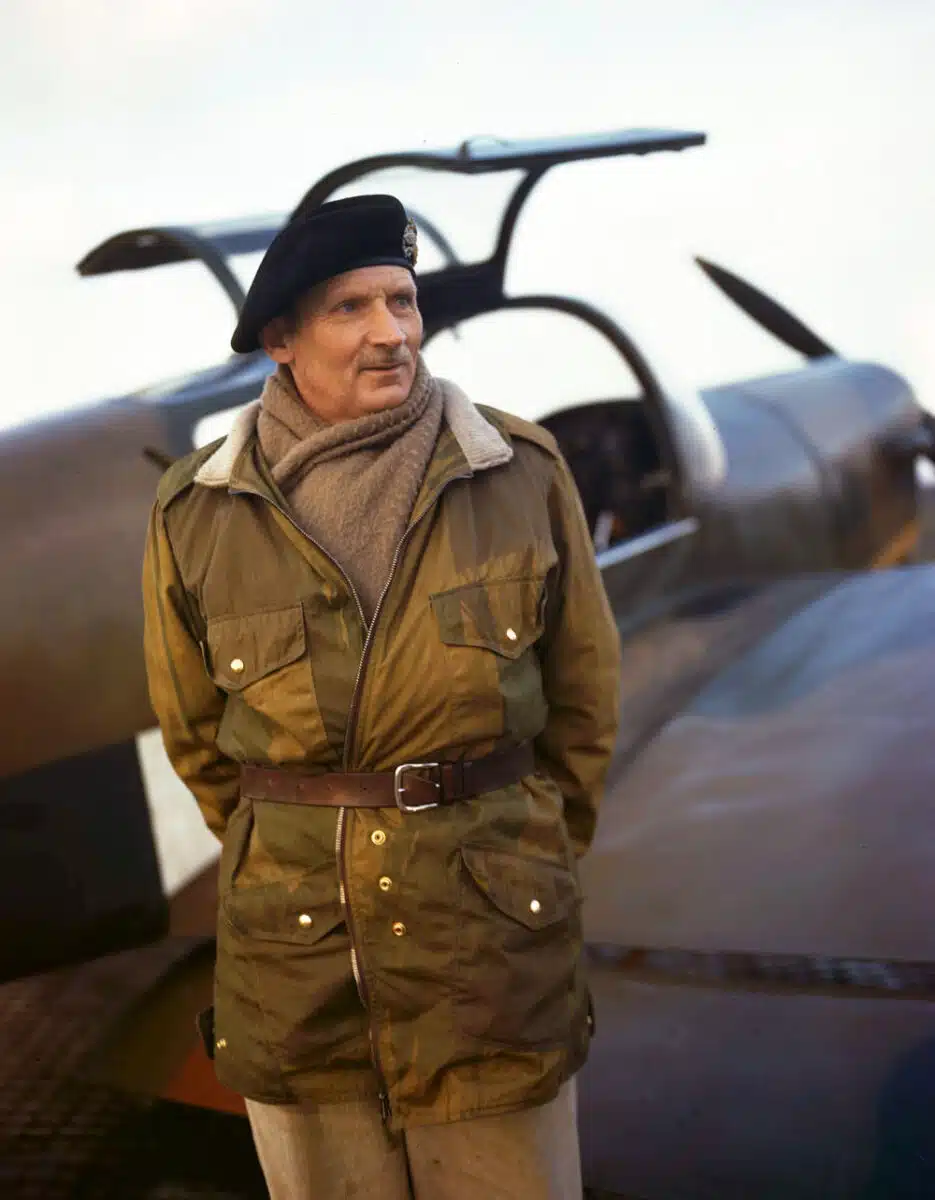
The Denison smock, complete with its distinctive camouflage, became the standard issue for British airborne forces. Its use extended to operations in North Africa, Italy, and Northwest Europe, where the need for versatile and effective camouflage was paramount. The pattern’s success lay not only in its visual effectiveness but also in its practical design, featuring multiple pockets and a loose fit to accommodate the equipment and gear carried by paratroopers.
Post-World War II, the Denison camouflage pattern left an indelible mark on military fashion and influenced subsequent camouflage designs. Beyond its military origins, the distinctive brushstroke pattern found its way into popular culture, becoming synonymous with airborne forces and commando units. The iconic imagery of soldiers donning the Denison smock during daring airborne operations remains embedded in the collective memory of military history enthusiasts.
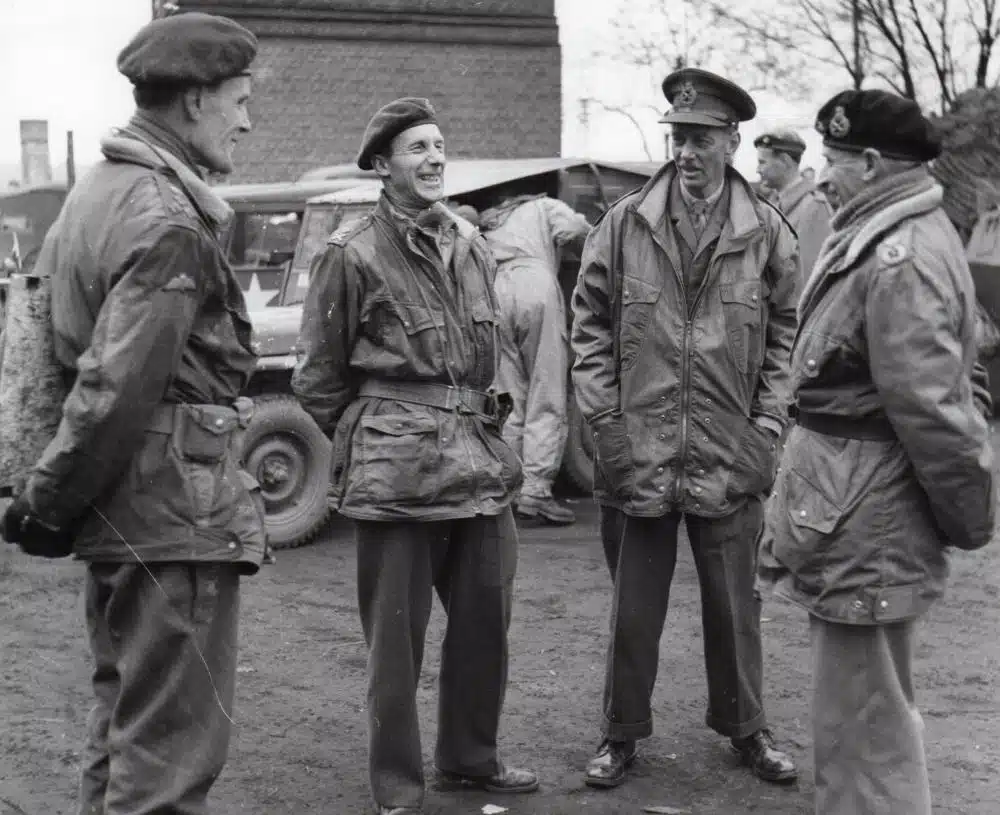
While the Denison smock is no longer standard issue, the brushstroke camouflage pattern endures as a symbol of airborne prowess and a testament to the marriage of form and function in military design. Its legacy is evident not only in historical photographs but also in the continued fascination with and appreciation for the unique aesthetics of Denison camouflage within military and collector communities worldwide.
Frogskin Camouflage
Frogskin camouflage, with its distinctive mottled pattern reminiscent of amphibian skin, emerged as a notable chapter in the history of military concealment during World War II. Developed by the United States military, frogskin camouflage was introduced to address the need for effective tropical concealment in the Pacific theater.
The pattern, officially known as the United States Marine Corps (USMC) Utility Uniform, was first issued in 1942. Its design featured irregular blotches of light and dark green, brown, and tan, mimicking the dappled sunlight filtering through jungle foliage. The intent was to provide American forces operating in the dense and varied landscapes of the Pacific islands with an effective means of blending into their surroundings.
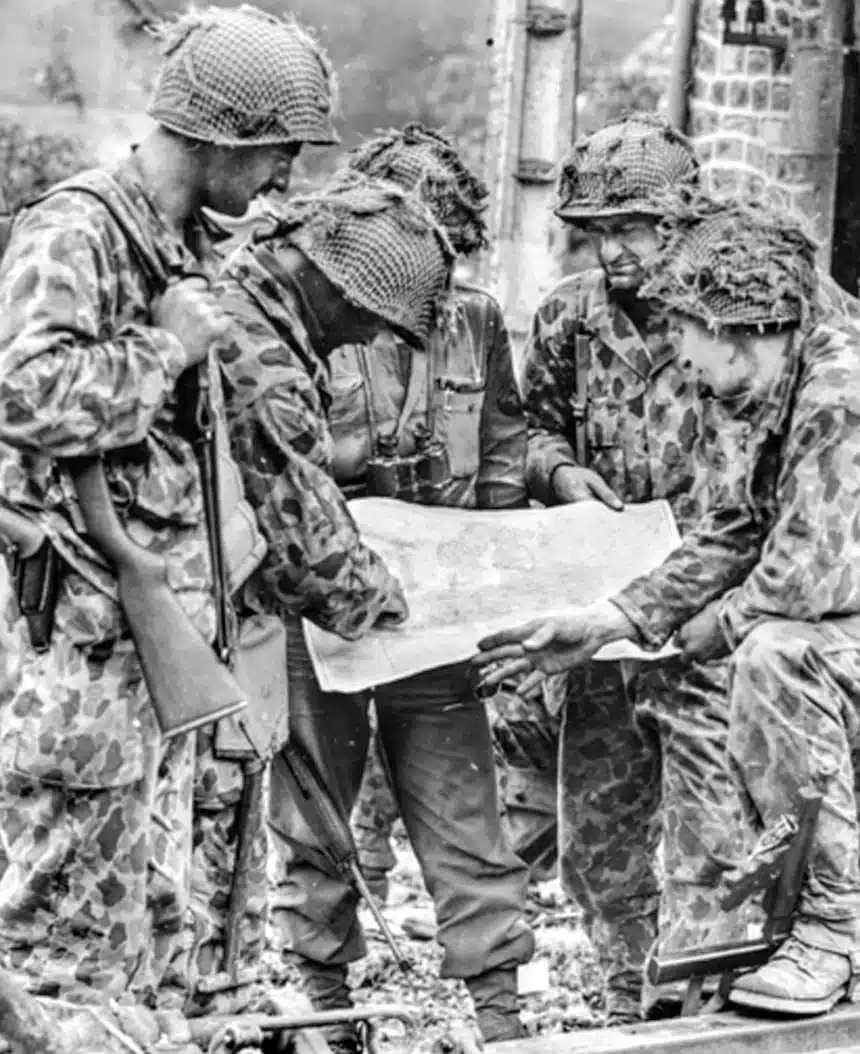
Frogskin camouflage saw extensive use among U.S. Marine Corps personnel and other Allied forces engaged in the Pacific campaigns. The pattern’s success lay in its adaptability to the lush, tropical environments of islands like Guadalcanal and Iwo Jima. The mottled design effectively broke up the wearer’s silhouette, offering a measure of concealment crucial for jungle warfare.
Post-World War II, frogskin camouflage continued to find utility in subsequent conflicts, such as the Korean War and the early stages of the Vietnam War. Its effectiveness in dense, vegetated terrains solidified its reputation as a practical and reliable camouflage pattern for tropical and jungle environments.
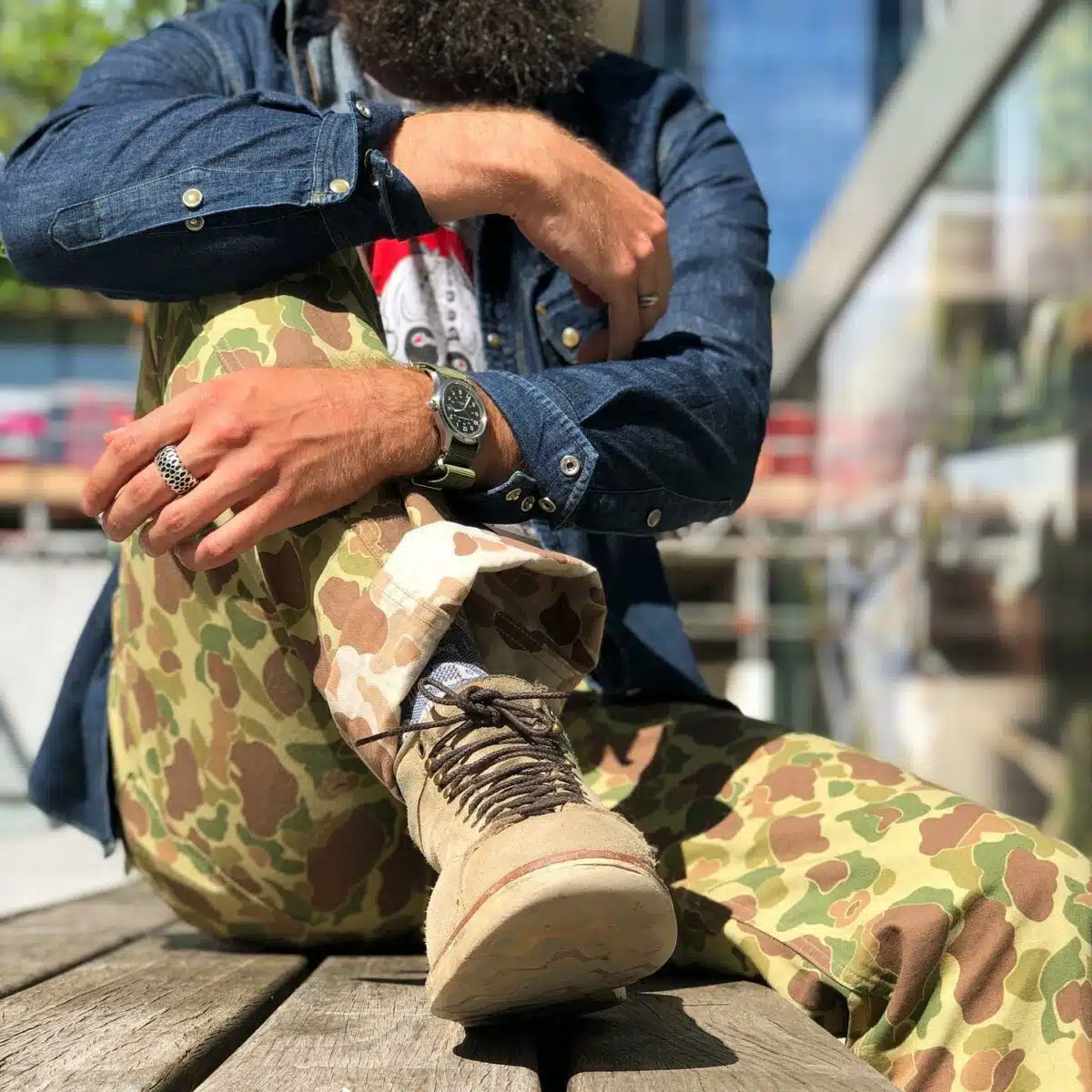
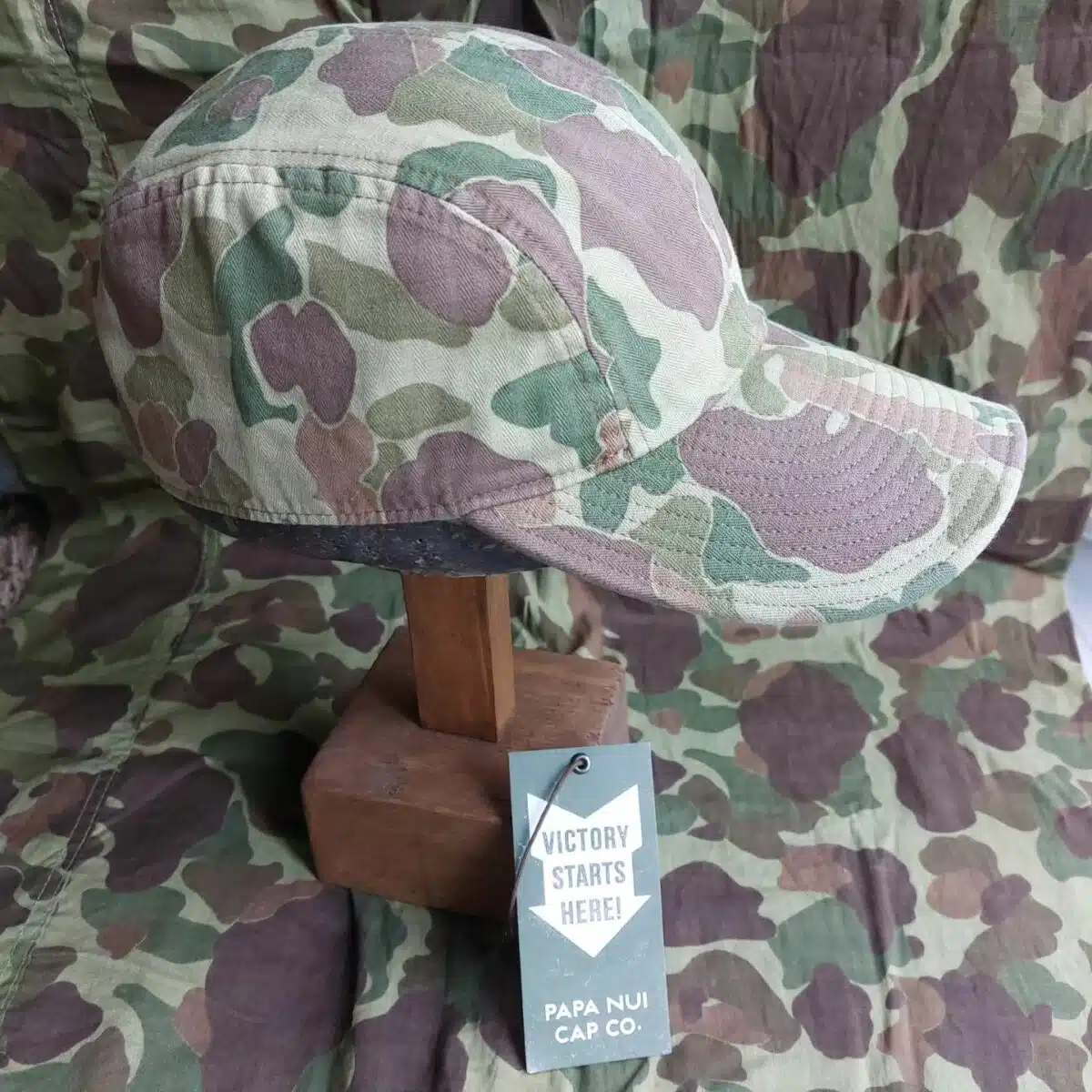
While the U.S. military eventually transitioned to different camouflage patterns, frogskin remains a celebrated and recognisable part of military history. Its distinctive appearance has also left an imprint on popular culture and fashion, with collectors and enthusiasts appreciating its unique aesthetic. The legacy of frogskin camouflage endures as a testament to the ongoing evolution of military concealment strategies and the importance of adaptability in the ever-changing landscape of warfare.
Duck Hunter Camouflage
Duck Hunter camouflage, also known as Waterfowl camouflage, stands as a testament to the intersection of hunting needs and camouflage innovation. Originating in the mid-20th century, this distinctive pattern was specifically designed for waterfowl hunters, aiming to provide effective concealment in marshes, swamps, and other wetland environments.
The history of Duck Hunter camouflage can be traced back to the growing popularity of waterfowl hunting in the United States during the mid-20th century. As hunters sought effective ways to blend into the reeds, cattails, and open waters frequented by ducks and other waterfowl, a specialized camouflage pattern became a necessity. In response to this demand, designers created a pattern characterised by earthy tones, including browns, tans, and greens, to mimic the natural vegetation found in wetland habitats.
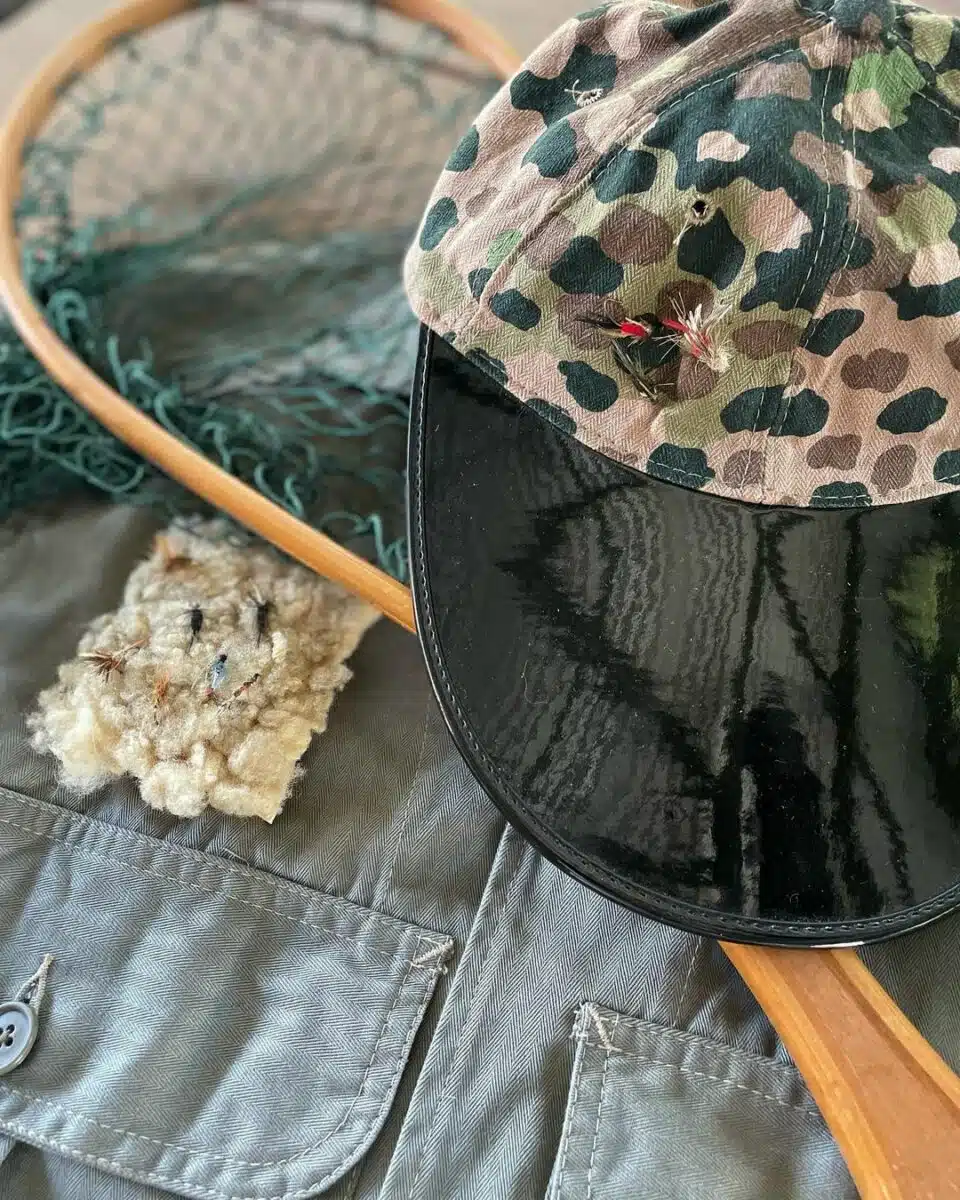
The effectiveness of Duck Hunter camouflage lies in its ability to break up the hunter’s outline against the complex background of marshes and waterways. The pattern typically features a mix of vertical and horizontal elements, resembling the varying shapes and angles of the vegetation found in wetlands. This allowed hunters to remain hidden from the keen eyes of waterfowl while waiting in blinds or on the water.
Over the years, Duck Hunter camouflage has evolved with advances in textile technology and an increased understanding of animal vision. While originally designed for waterfowl hunting, its effectiveness in concealing hunters has led to its adoption in other outdoor activities, such as wildlife photography and birdwatching.
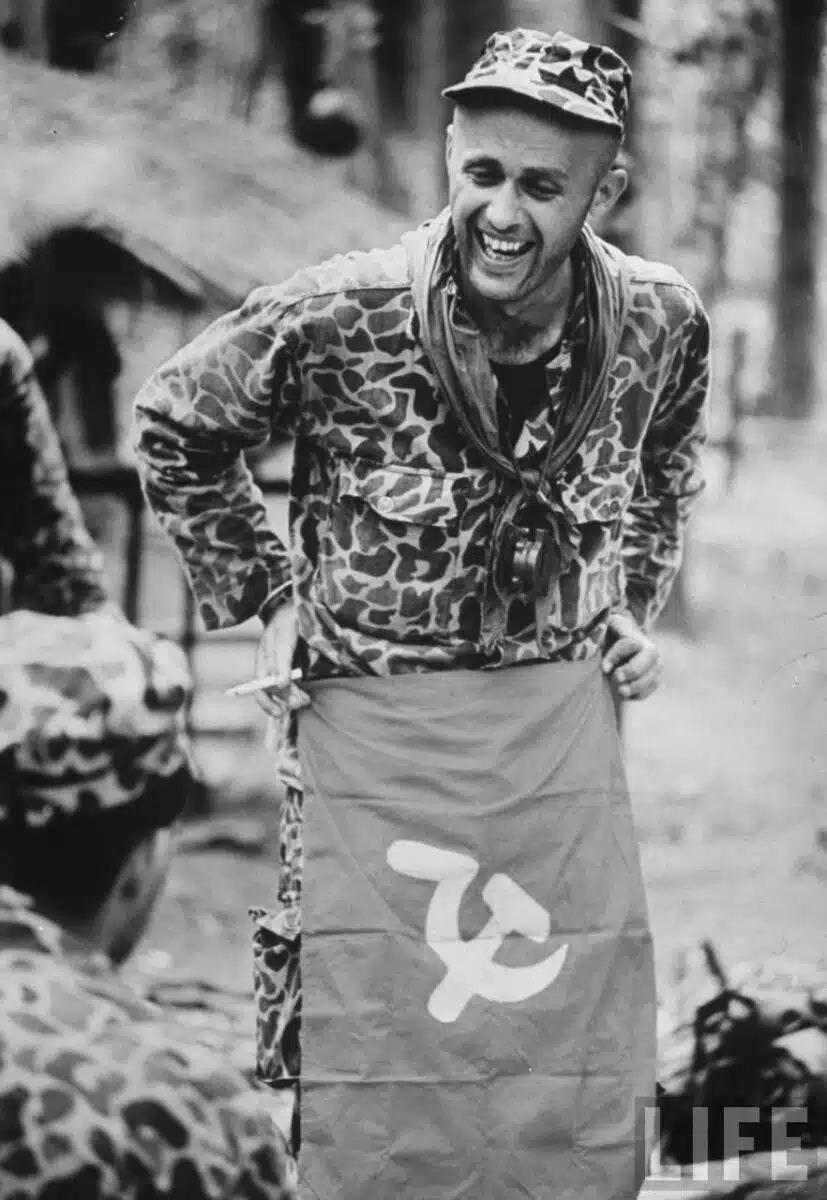
Today, Duck Hunter camouflage remains a staple in the arsenal of waterfowl hunters and outdoor enthusiasts alike. Its legacy reflects the ongoing commitment to designing specialised camouflage patterns that cater to the unique needs of various outdoor pursuits, emphasising both functionality and the art of blending seamlessly with nature.
Woodland Camouflage
Woodland camouflage stands as one of the most iconic and widely adopted patterns in military history, designed to blend seamlessly into forested environments. Emerging during the late 1970s, it represents a significant advancement in camouflage technology and has played a pivotal role in the uniforms of armed forces around the world.
The United States introduced the woodland camouflage pattern in the early 1980s, replacing the solid olive drab uniforms used during previous decades. The design featured a mix of light and dark green hues, as well as brown and black elements, creating a pattern that mimicked the dappled sunlight and shadows of wooded areas. The intent was to provide effective concealment in a variety of forested environments, from temperate woodlands to lush jungles.
![Deadstock [GORE-TEX] French Army Foul Weather Parka.](https://www.thosethatknow.co.uk/wp-content/uploads/2023/11/camo-guide-woodland-camo-01-960x1200.jpg.webp)
Woodland camouflage saw widespread adoption by NATO forces and became the standard-issue pattern for U.S. military uniforms. Its success was evident in its performance during operations such as the Gulf War and the conflicts in the Balkans. The pattern’s adaptability to diverse wooded terrains made it a versatile choice for soldiers engaged in a range of environments.
Beyond military applications, woodland camouflage found its way into civilian use, particularly in outdoor and hunting gear. The pattern’s effectiveness in natural settings made it popular among hunters, photographers, and outdoor enthusiasts seeking effective concealment in wooded landscapes.
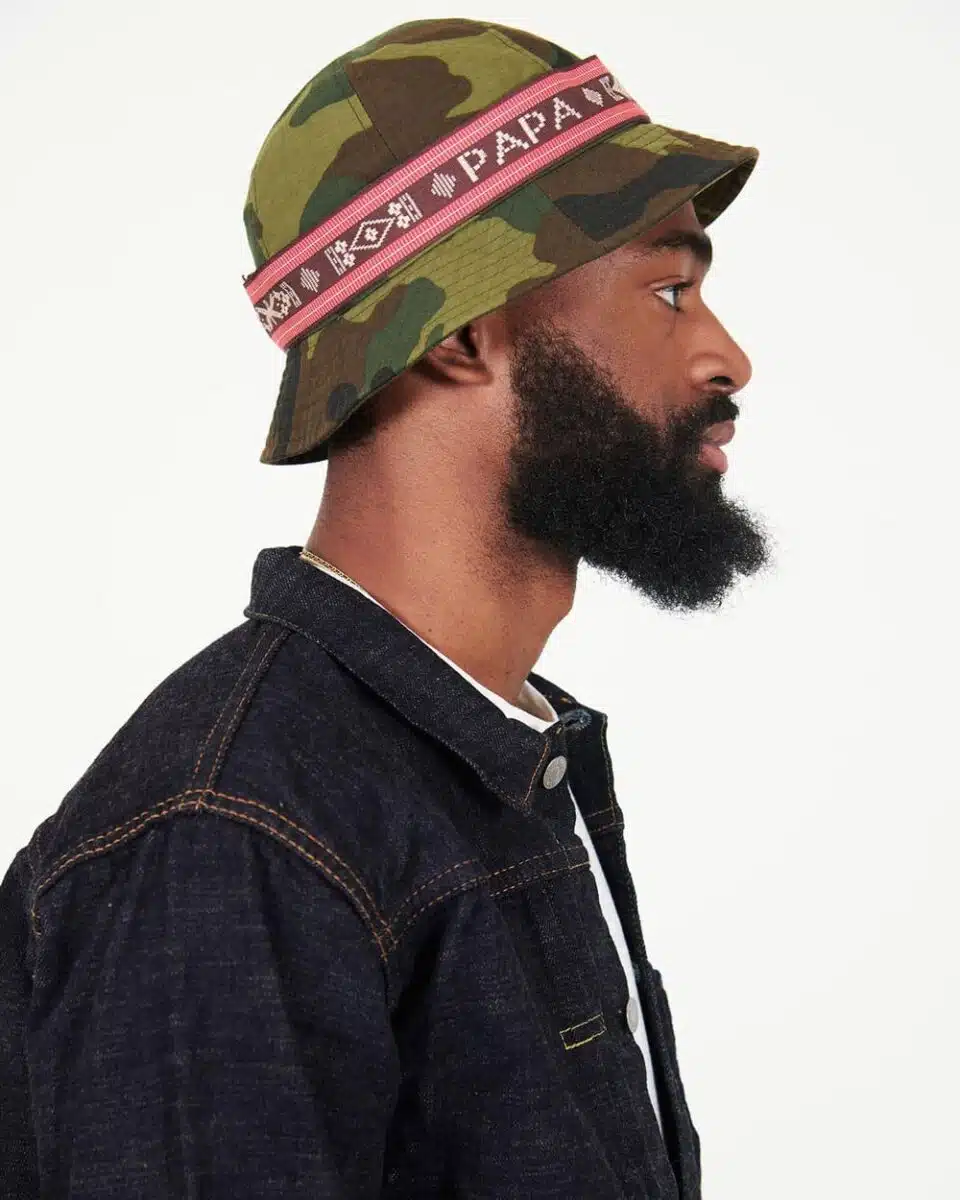
While digital and pixelated camouflage patterns have since emerged, woodland camouflage continues to be used by military and law enforcement agencies worldwide. Its enduring popularity reflects the enduring effectiveness of its design and the role it played in shaping the evolution of camouflage for modern military applications. The woodland pattern remains an enduring symbol of the intersection between functionality, adaptability, and the visual aesthetics of military uniforms.
Tiger Stripe Camouflage
Tiger Stripe camouflage, with its distinctive vertical stripes, is an iconic pattern that emerged during the Vietnam War and has left an indelible mark on military fashion. Originating in the early 1960s, Tiger Stripe was designed to provide effective concealment in the dense jungles and varied terrains of Southeast Asia, where conventional camouflage struggled to offer adequate cover.
The pattern’s origins are somewhat contested, but it is widely associated with the Special Forces units of the United States military, including the Green Berets and Navy SEALs. The design featured thin, vertical stripes in various earth tones, such as green, brown, and black, creating a visual disruption that mimicked the play of light and shadows in the dense vegetation.
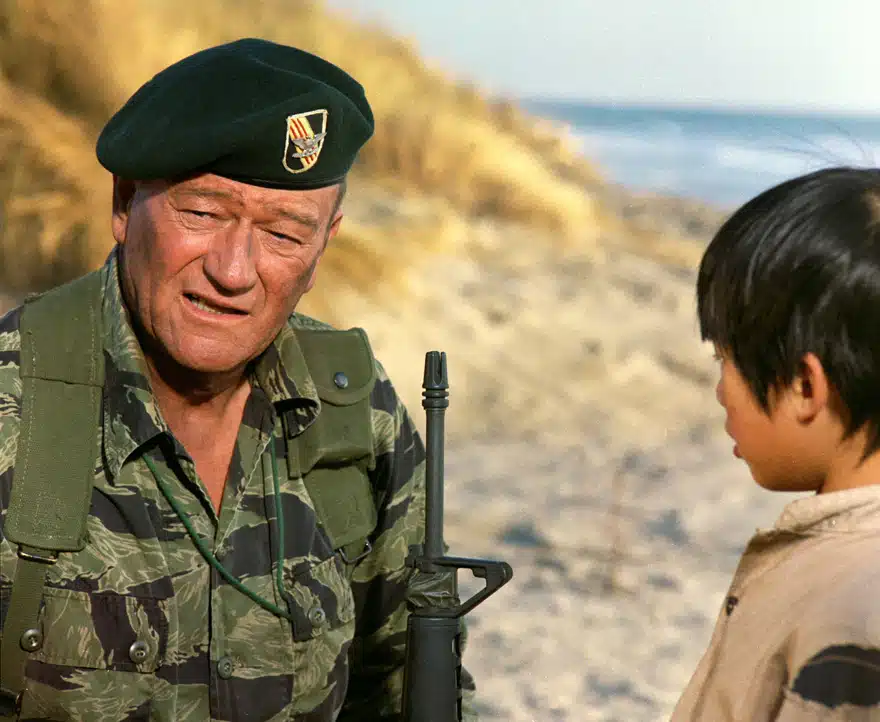
Tiger Stripe camouflage quickly gained popularity among U.S. Special Forces operating in Vietnam. Its effectiveness in providing concealment in the thick jungle environments contributed to its widespread adoption. Beyond the practical advantages, the pattern also became a symbol of elite units, carrying a certain mystique and prestige.
Post-Vietnam, Tiger Stripe camouflage continued to be used by Special Forces and found its way into the military of other nations. The pattern’s versatility made it suitable for a range of environments, from tropical jungles to arid landscapes. It became a symbol of unconventional warfare and the special operations community.
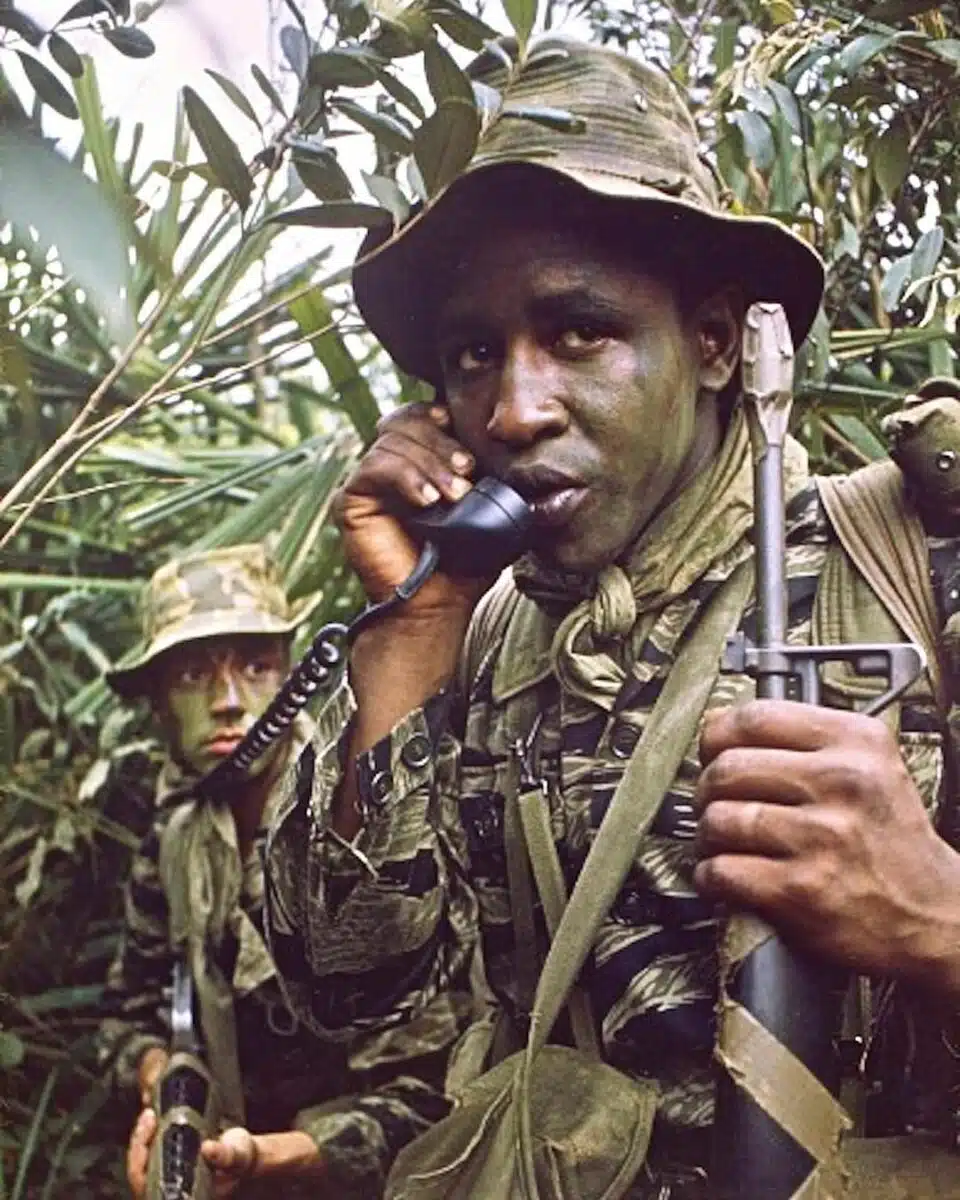
Tiger Stripe camouflage is a testament to the adaptability and innovation of military design. Its origins in the jungles of Vietnam have evolved into a lasting legacy, symbolising the elite and unconventional aspects of modern warfare while maintaining a distinctive and timeless visual appeal.
Lizard Camouflage
The history of lizard camouflage is somewhat more recent compared to classic patterns. It gained traction in the late 20th century as military forces sought innovative ways to enhance concealment in diverse terrains. The lizard pattern typically features irregular shapes and lines resembling the scales of lizards, with a mix of earthy tones to mimic the reptiles’ natural habitats.
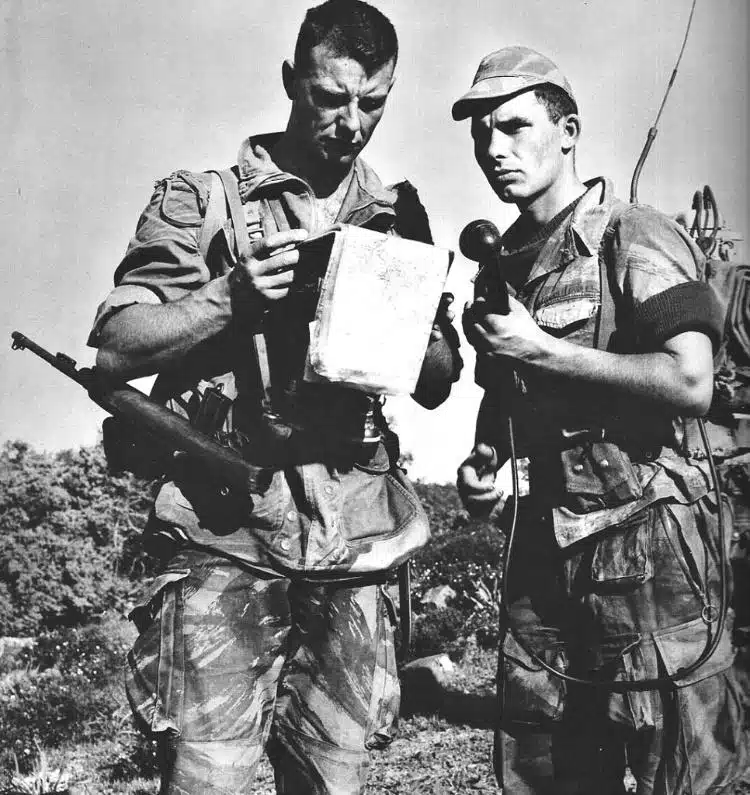
The effectiveness of lizard camouflage lies in its ability to break up the wearer’s silhouette while offering a level of adaptability to different environments. The intricate patterns and color variations contribute to creating visual disruption, making it suitable for a range of landscapes, from arid deserts to dense jungles.
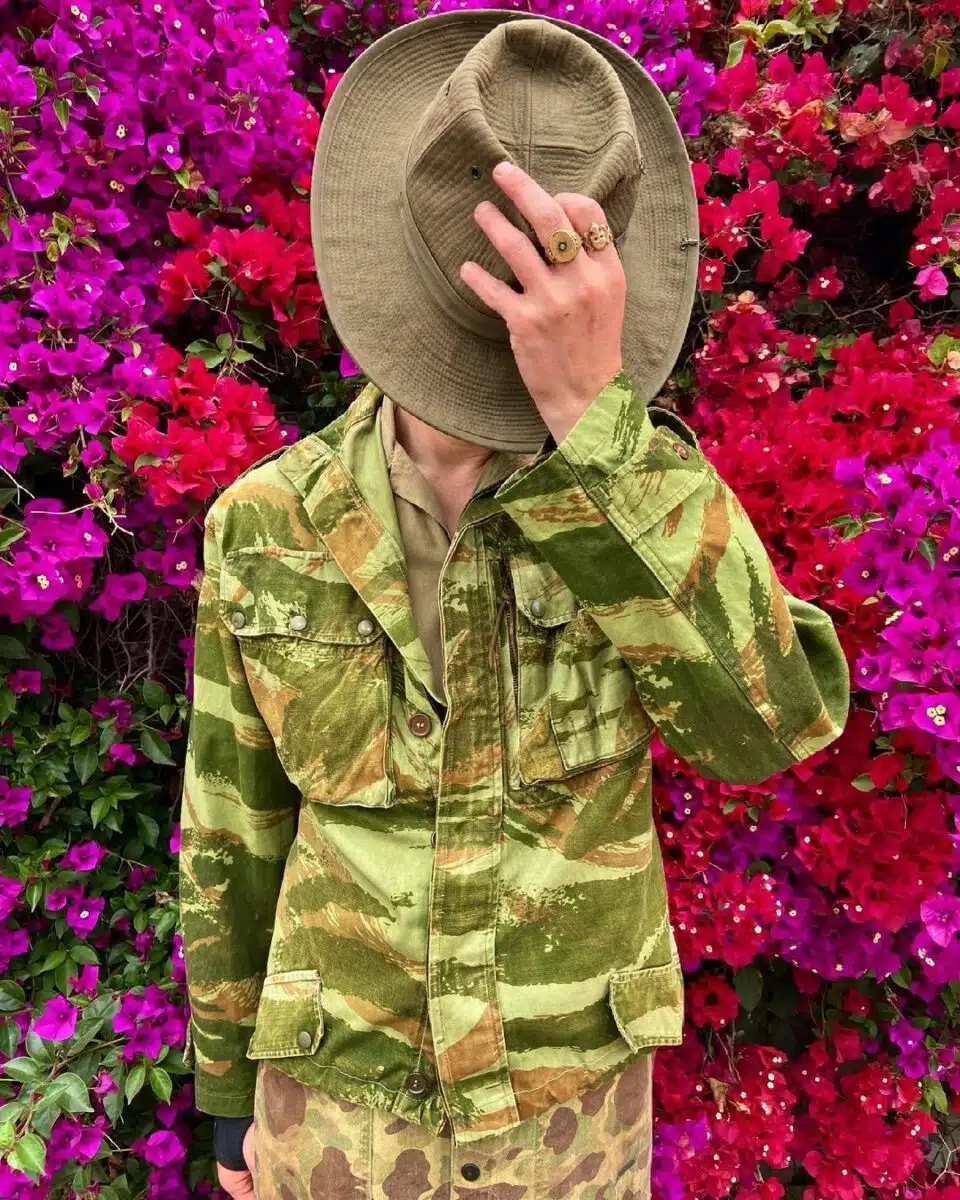
While not as widespread as some traditional camouflage patterns, lizard camouflage has found its place in certain military units, particularly those operating in regions with specific environmental characteristics. The pattern’s adoption is often linked to the need for specialized concealment where other traditional designs might fall short.
Beyond the military, lizard camouflage has made occasional appearances in the realm of outdoor and hunting gear. Its unique aesthetic has also captured the attention of fashion enthusiasts who appreciate the fusion of nature-inspired design and functional utility.
Disruptive Pattern Material Camouflage
P68 DPM, or Disruptive Pattern Material camouflage, has carved its niche in the history of military concealment, offering a distinctive design that’s both effective and adaptable. Originating in the United Kingdom, the pattern made its debut in the late 1960s and has since become synonymous with British military uniforms.
The P68 DPM design is characterized by a series of small, multi-colored, and irregularly shaped pixels. The intention was to create a pattern that disrupted the wearer’s outline at different distances, blending seamlessly into a variety of terrains. The use of pixels marked a departure from traditional, larger-scale camouflage patterns, offering improved concealment by breaking up the silhouette more effectively.
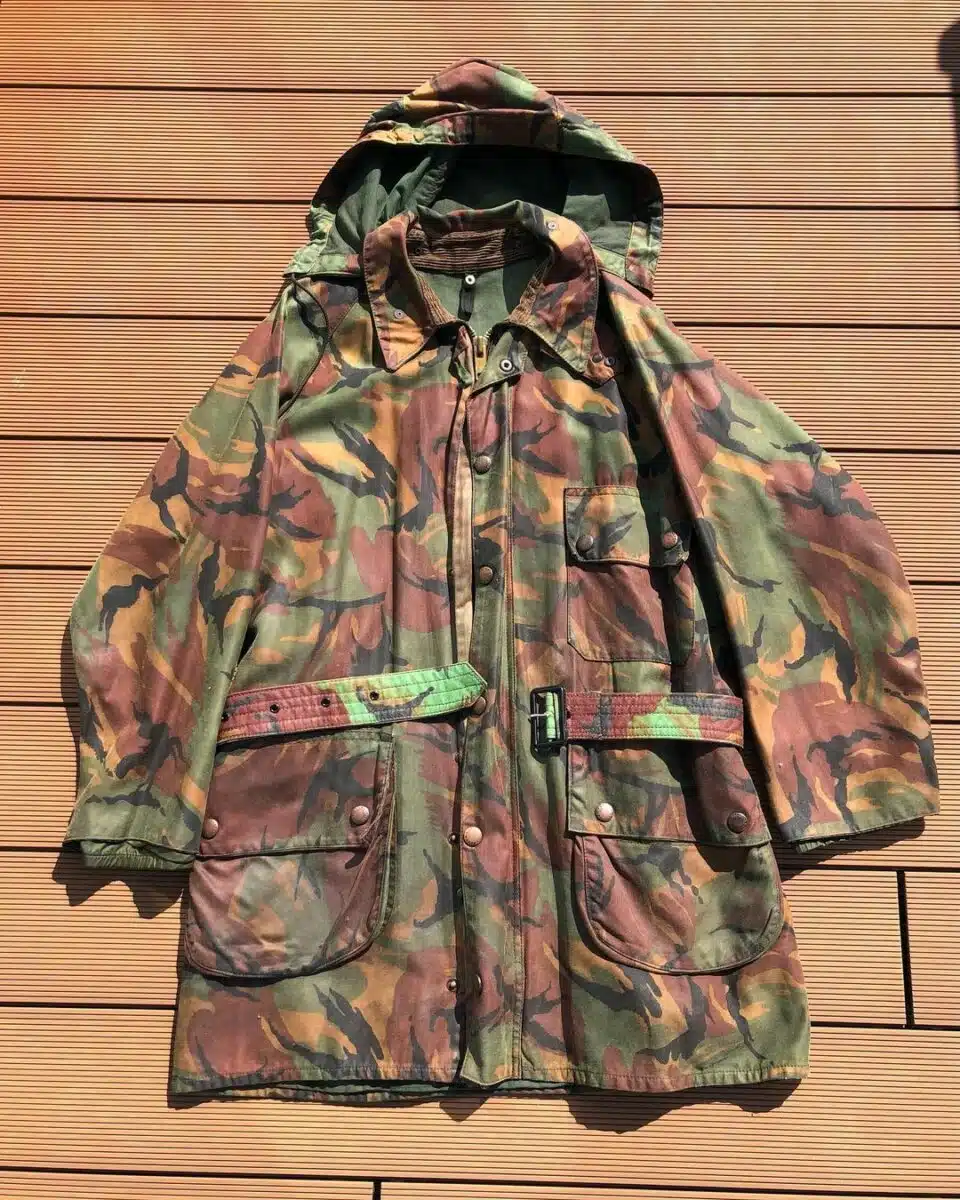
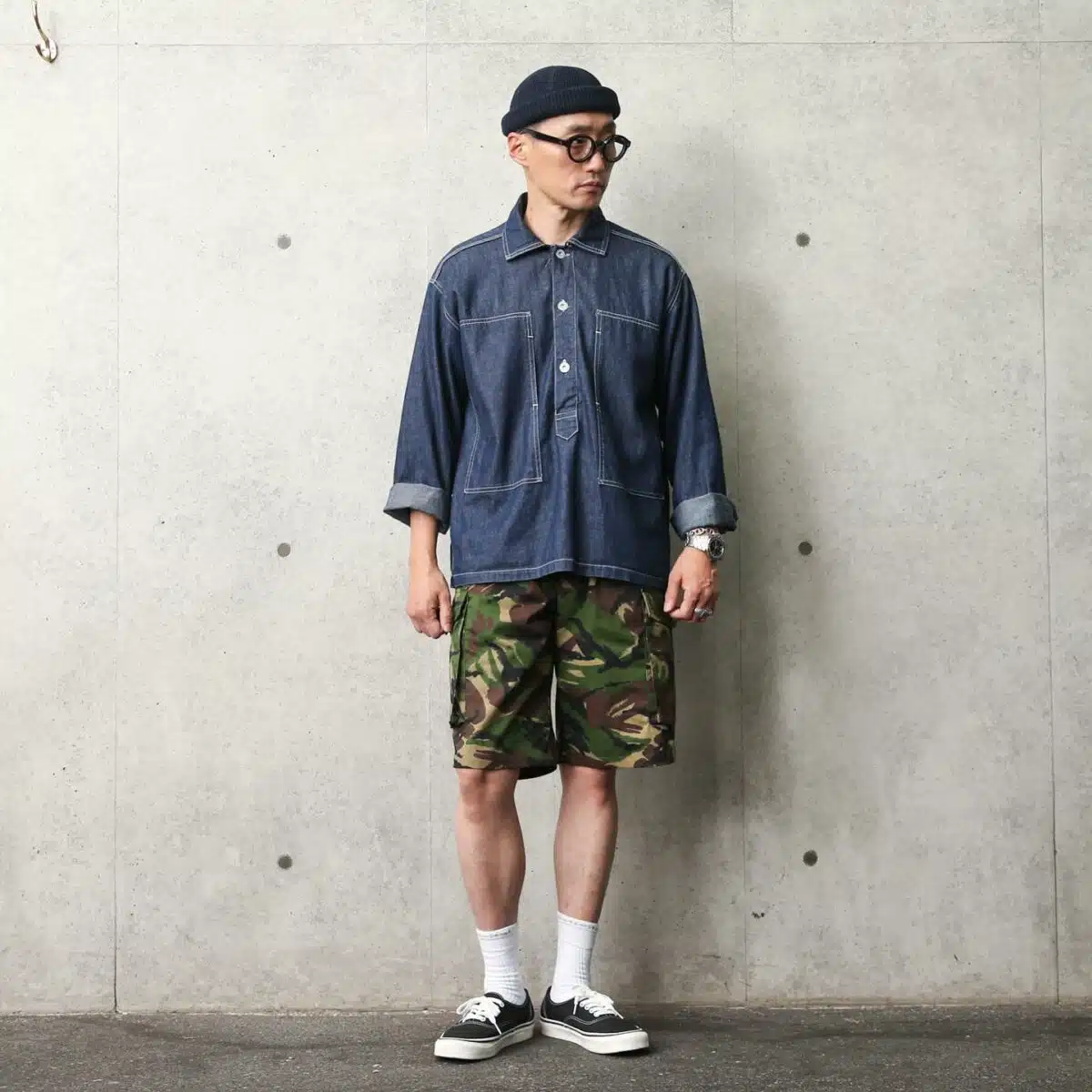
Initially introduced for British military forces, P68 DPM found widespread use during the late Cold War era and throughout various conflicts, including the Falklands War and the Gulf War. Its success lay in its versatility, providing effective concealment in a range of environments, from woodland and grassy plains to urban landscapes.
The P68 DPM pattern underwent iterations to adapt to changing operational requirements. The introduction of Desert DPM, featuring a color palette suited for arid environments, demonstrated the pattern’s flexibility in catering to diverse landscapes. The success of P68 DPM extended beyond military applications, influencing other nations in the design of their camouflage patterns. Post-Cold War, the pattern endured in the British military, transitioning to more modern pixelated designs.
P68 DPM’s impact is not confined to the military realm; its unique aesthetic has also seeped into popular culture and fashion. Collectors and enthusiasts appreciate its distinctive pixelated appearance, showcasing the enduring appeal of this disruptive pattern material in the ever-evolving landscape of military camouflage.
